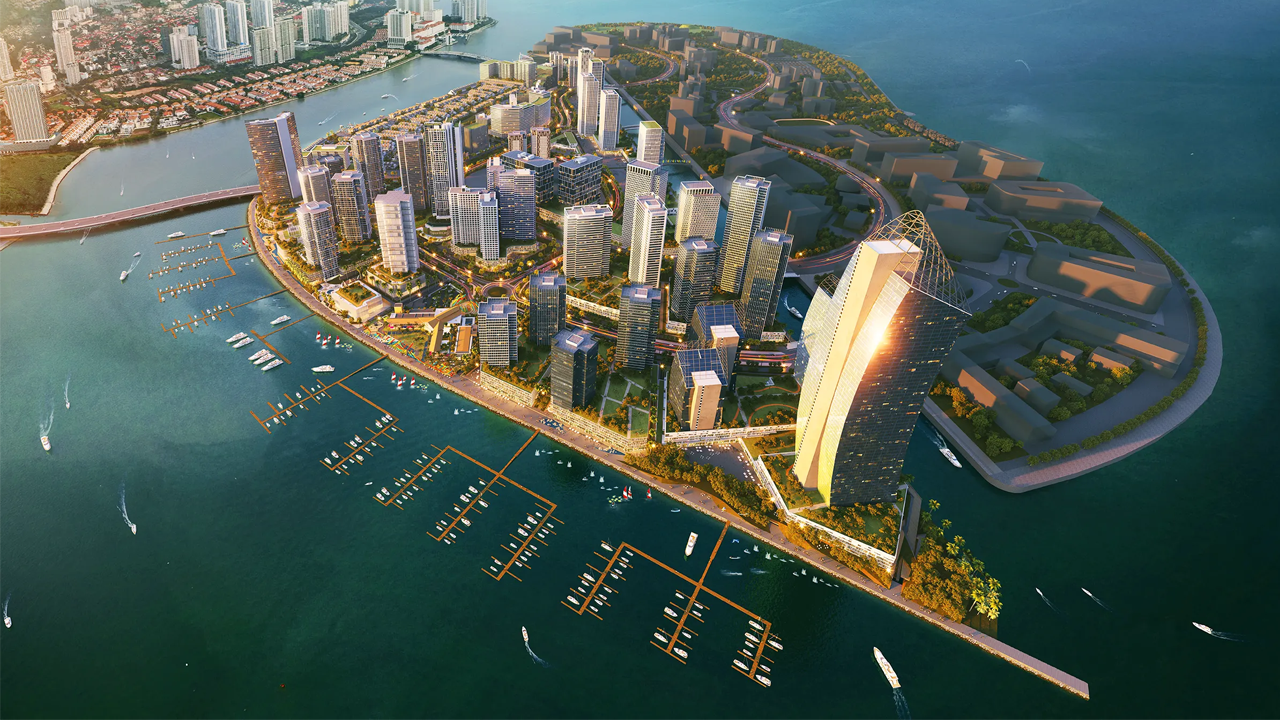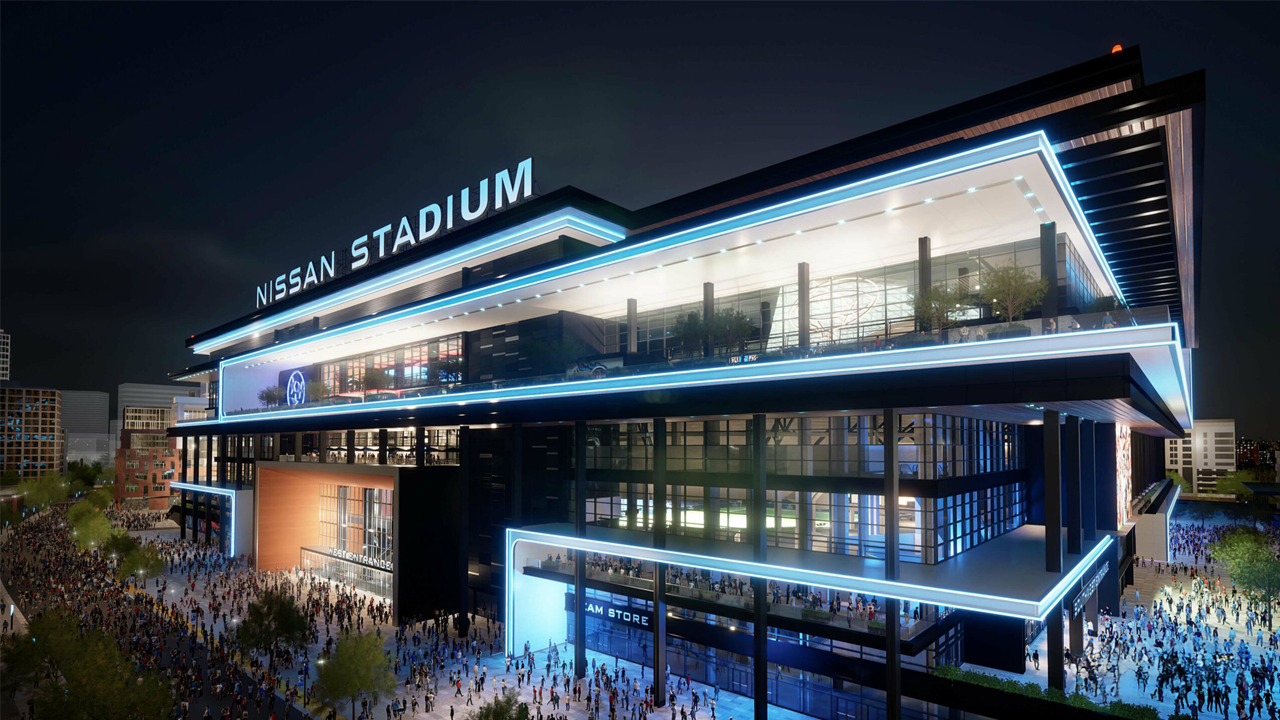432 Park Avenue: Is This New York Skyscraper Cursed?
- Youtube Views 2,514,475 VIDEO VIEWS
Video narrated and hosted by Fred Mills.
“THIS is the building of the 21st century, the way the Empire State Building was the building of the 20th century” - or so according to its developer, Harry Macklowe.
432 Park Avenue is one of the world’s most iconic skyscrapers, stretching high above the New York skyline. It’s the proud owner of some of the best views of the city - but it comes with a chequered reputation and it’s been sending billionaires running.
This is a true New York blockbuster set in the heart of one of this city’s most prestigious districts, so what’s actually happening at 432 Park Avenue? Why are residents of New York’s ultra-luxury mega-tower burying it in lawsuits? And is this city’s most divisive skyscraper really falling apart?
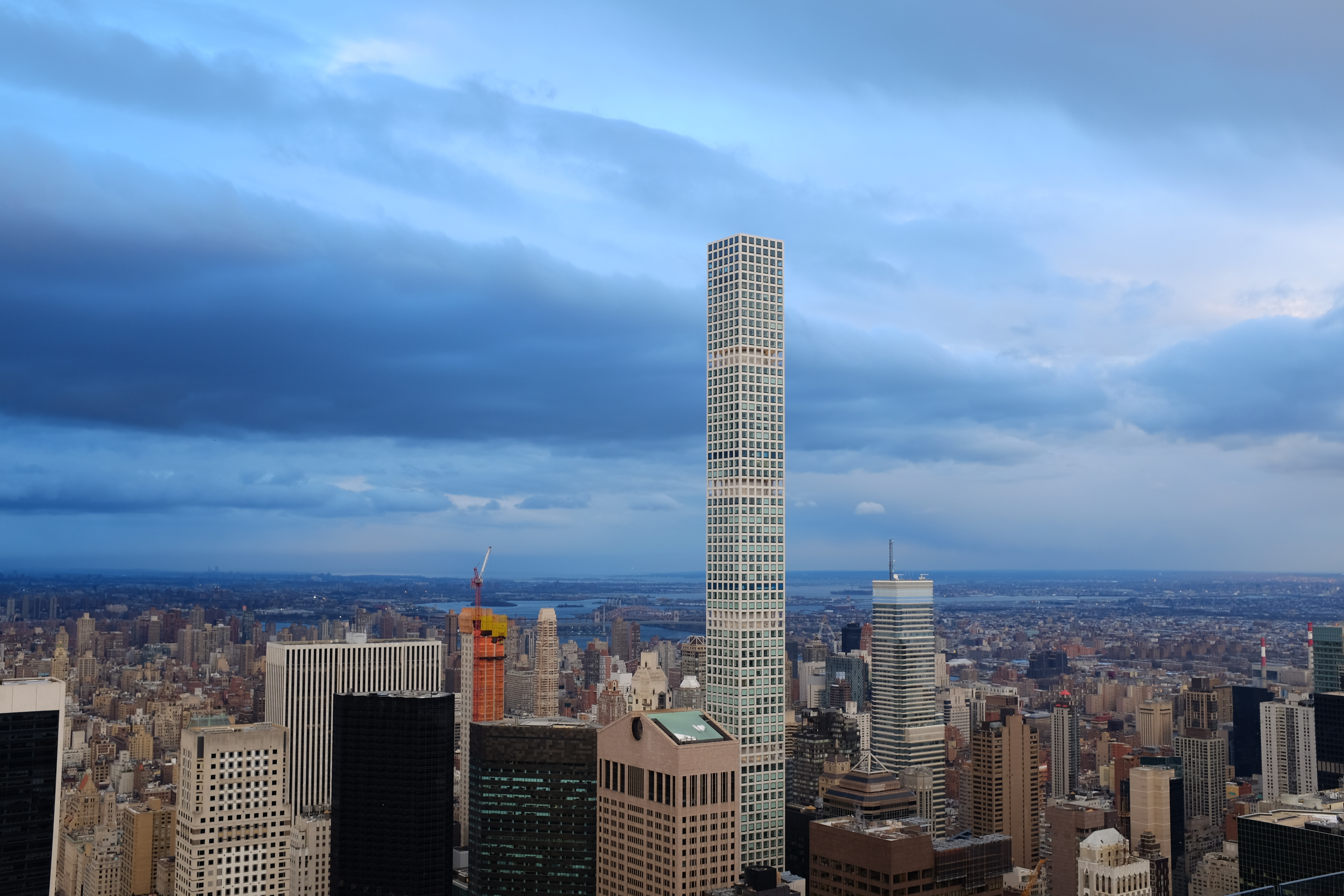
Above: 432 Park Avenue sits in an area of New York known as Billionaires' Row.
This is 432 Park Avenue
Standing at 425.5m tall, Manhattan’s 432 Park Avenue is prime luxury real estate. Only the world’s wealthiest are able to even dream of living here and it’s not hard to see why it’s so popular. Views from the upper floors of this supertall skyscraper stretch out over New York’s most iconic locations.
To give you a sense of just how expensive these apartments are, the penthouse at 432 sold for an eye-watering $70 million. Prices stop being easy to visualise once you get to these figures so keep in mind that the median house price in New York City is around $850,000. In fact, the average New Yorker would have to work for 800 years to be able to afford this penthouse.
432 and its towering neighbours form one of Manhattan’s most exclusive neighbourhoods, the aptly named Billionaires' Row. It’s sprawled along Manhattan’s 57th Street, a commercial zone flush with swanky high-rises gazing out over a corner of peace in the chaos - Central Park. Naturally, this is a prime location for aspirational developers looking to turn a hefty profit, and their super-rich customers with money to spare.
While a lot of Manhattan is staunchly protected by planning controls, this stretch sits in the Midtown Special Zoning District - an area that welcomes high-density, and importantly, mixed-use developments.
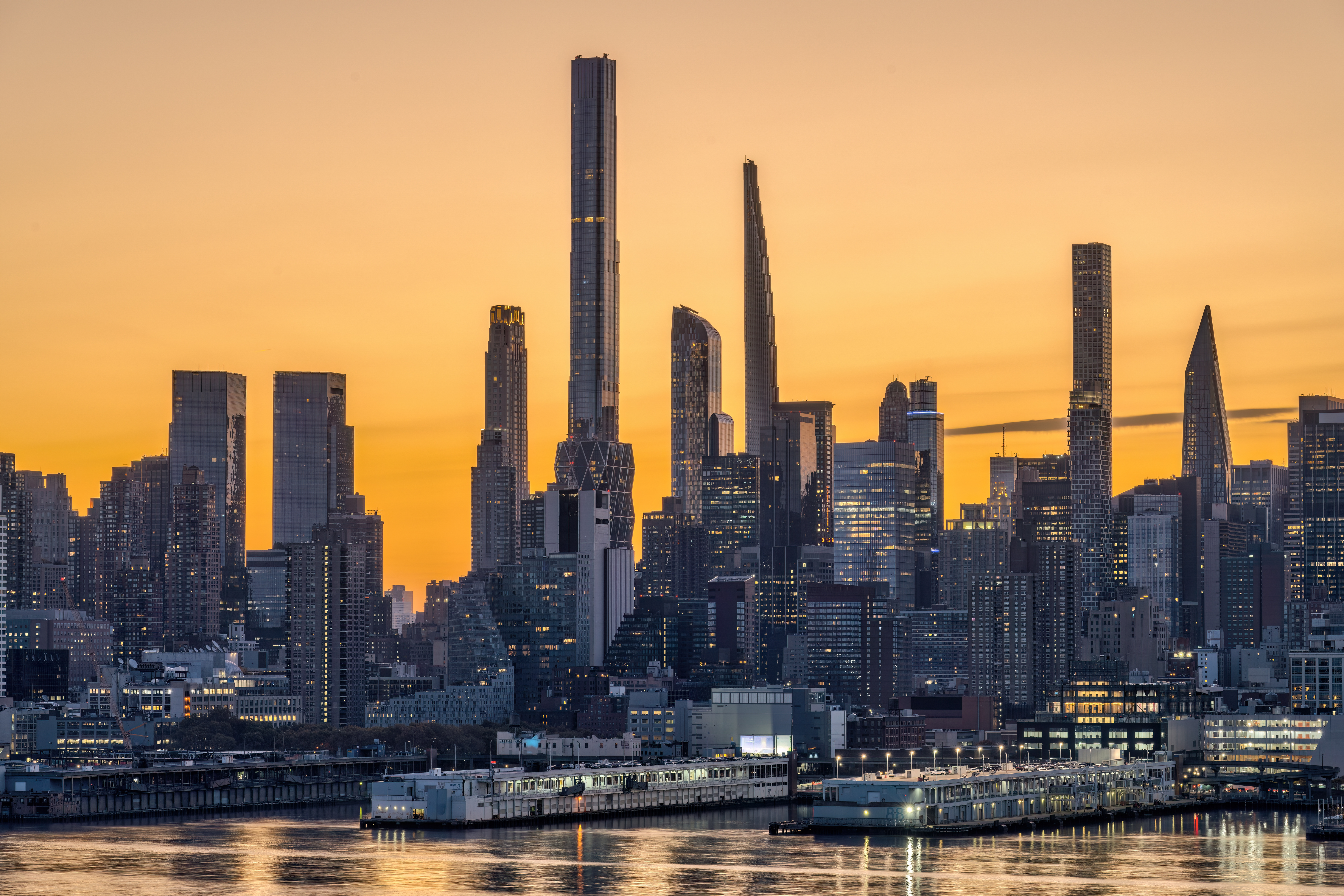
Above: Billionaires' Row is an exclusive area of high-rise towers in Manhattan.
It might be a dream location for developers but the challenge is that Midtown Manhattan is already tightly packed. To maximise space, and in turn the financial potential of a property, developers have to reach for the skies. They found a nifty loophole that allowed them to buy the air rights from nearby buildings, meaning they could grow their towers to ridiculous heights.
As you might imagine, it became a tall tower free-for-all and so Billionaires' Row, home of the notorious 432, was born. Jason Haber is a real estate broker for Compass and sells apartments in the building:
“Most towers have setbacks so it’ll be wider at the base and then as you go up, you set back and you become more and more narrow. The Empire State Building comes to mind as a classical example of that kind of a setback. What was unique about this (432) was that its shape maintained all the way up and around which of course is very different.”
The man behind the design is the late Rafael Viñoly, an architect who was never afraid to go against the grain. He’s the mind behind the Tokyo International Forum, the Walkie Talkie in London and the Battersea Power Station masterplan.
His legacy really lives on beyond him.
Like many architects, he took inspiration from all walks of life. According to Viñoly and the building's original developer, Harry Macklowe, part of the inspiration for 432 came from a trash can designed in 1905 by Austrian designer, Josef Hoffman and it bears a pretty striking resemblance.
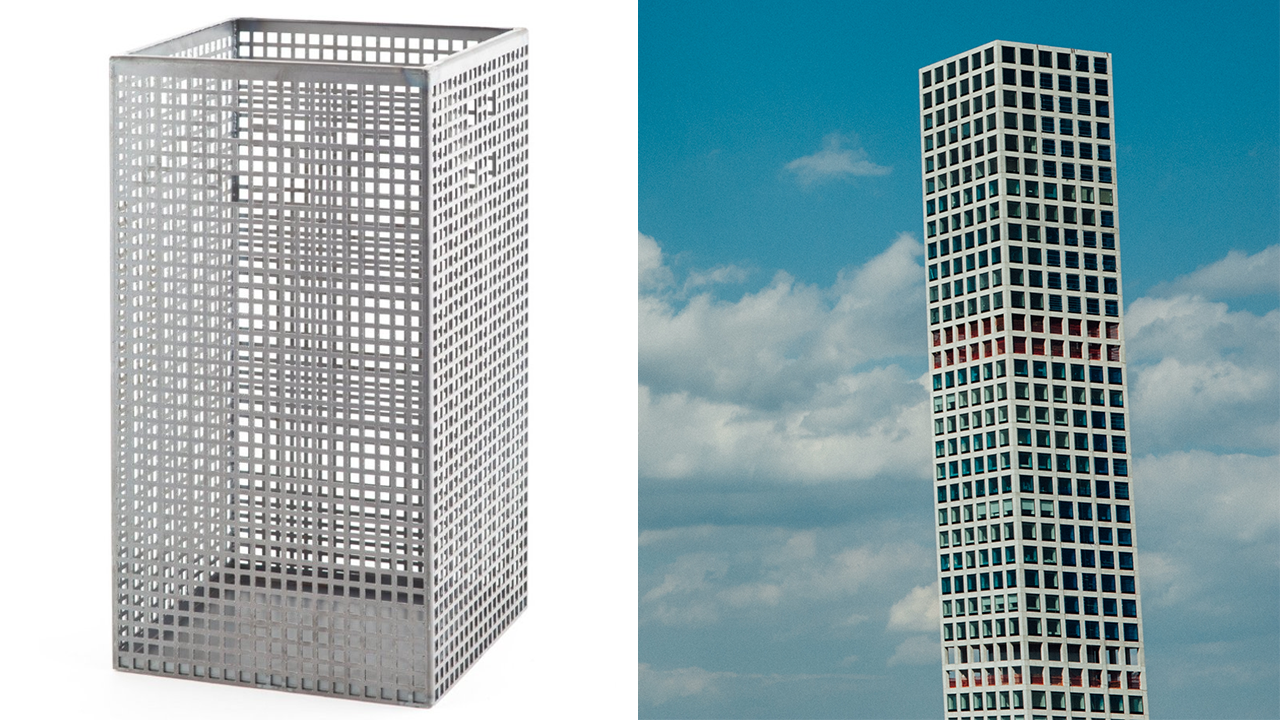
Above: 432 Park Avenue takes inspiration from a trash can designed by Josef Hoffman.
But what’s truly staggering is its dimensions. Until 2020, 432 was the tallest residential tower in the world, standing at 425.5 metres. The footprint is a perfect square, 28.5 metres on each side - that makes its height to width ratio 19:1.
To support a structure of that height, this skyscraper was built with two massive, ultra-strong concrete tubes, one inside the other. That inner tube is 9m x 9m of reinforced concrete that forms the walls, ranging in thickness from 300mm at the top to 760mm at the base. It’s the core of the building and where you’ll find the lifts and stairs.
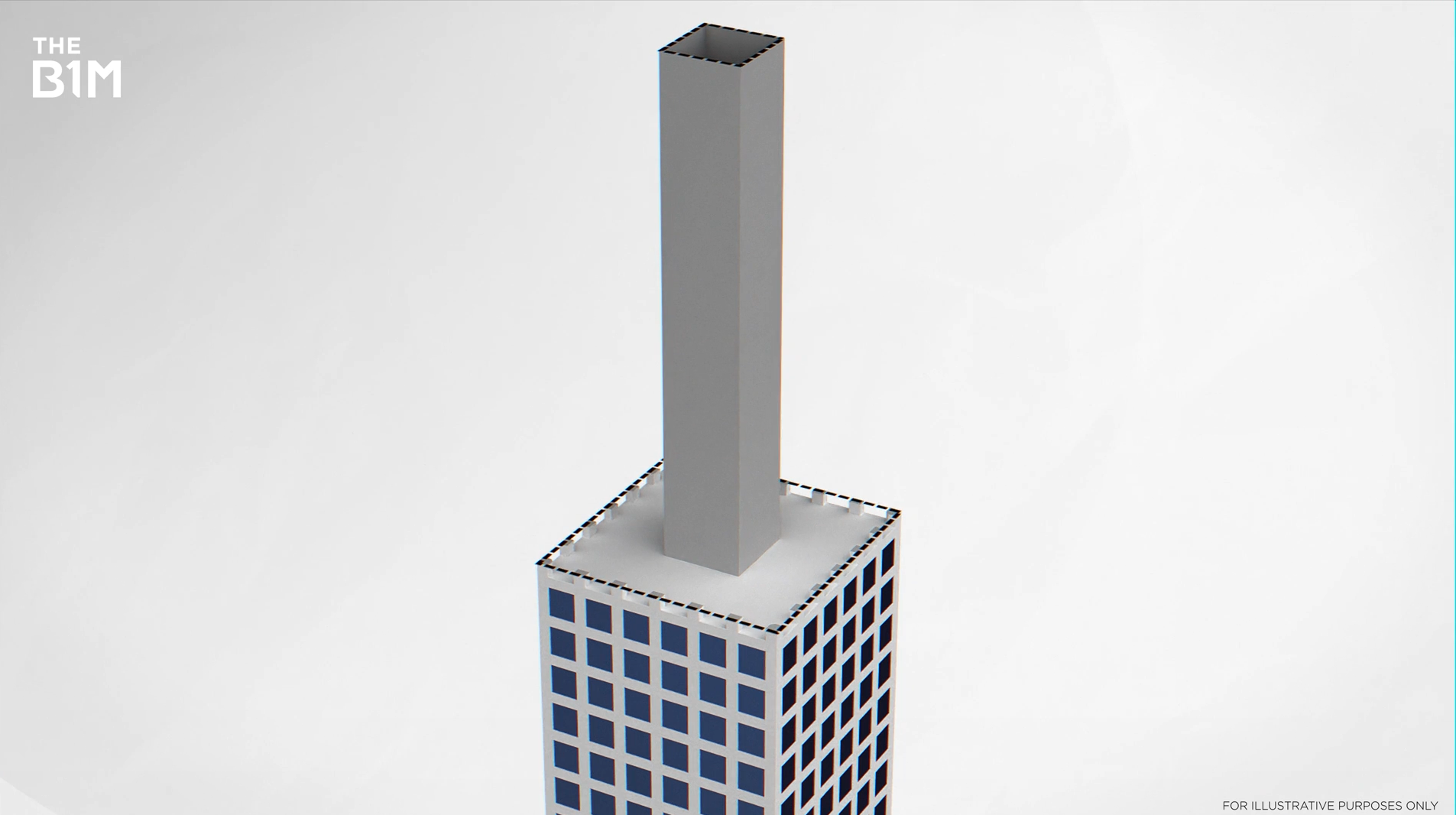
Above: 432 Park Avenue consists of two incredibly strong concrete tubes, one inside the other.
The outer tube acts as the tower’s frame - this is connected to the inner structure through spandrel beams at every 12th floor. Removing the need for interior columns leaves those pricey apartments flush with space. For example, 432’s penthouse has an impressive 8,255 square feet to play with.
One of the key challenges with constructing a building like this is the wind. Skyscrapers are classed as sensitive to wind effects when they have a height-to-width ratio over 5:1 and as we know, 432’s ratio is three times that. Because it’s so tall in comparison to its relatively tiny footprint, any gusts near the top end would make this tower rock like a bobble-head.
Early testing by RWDI showed that even in low winds the tower would suffer from something called vortex shedding, where the air forces swirl around a building, causing vibration.
That can cause a few issues: some pretty frustrating noise problems, motion sickness and more seriously, potential structural damage. To tackle that they built five mechanical levels, each stretching over two floors, spaced out all the way up the building. In theory, these mechanical floors act as breaks for the wind, allowing gusts to pass through without barreling down to street level or hammering the top end.
But even that wasn’t deemed enough here. So the answer? A tuned mass damper.
In basic terms, a tuned mass damper, or TMD, is a massive device that swings to level out the movement of a building but 432 needed more than your ordinary damper. One of the simplest TMD forms works like a pendulum but to match the movement of a skyscraper this tall and thin, you'd need a gigantic pendulum weighing more than 1,000 tonnes (1,200 tons) and measuring nearly 37 metres long (120 feet).
To do that, eight storeys of space would have been sacrificed and made inaccessible - and that just wasn’t going to fly. The answer was to split this enormous mechanism in half, with each piece going into a narrow corridor on either side of the tower’s core, working a bit like an opposed pendulum. The new design fits within three storeys and allows the dampers to travel up to a whopping 136 inches in any direction, with the aim of controlling the building’s sway.
Of course, once 432’s doors opened, the engineering became an afterthought, drowned out by debate over its impact on the skyline.
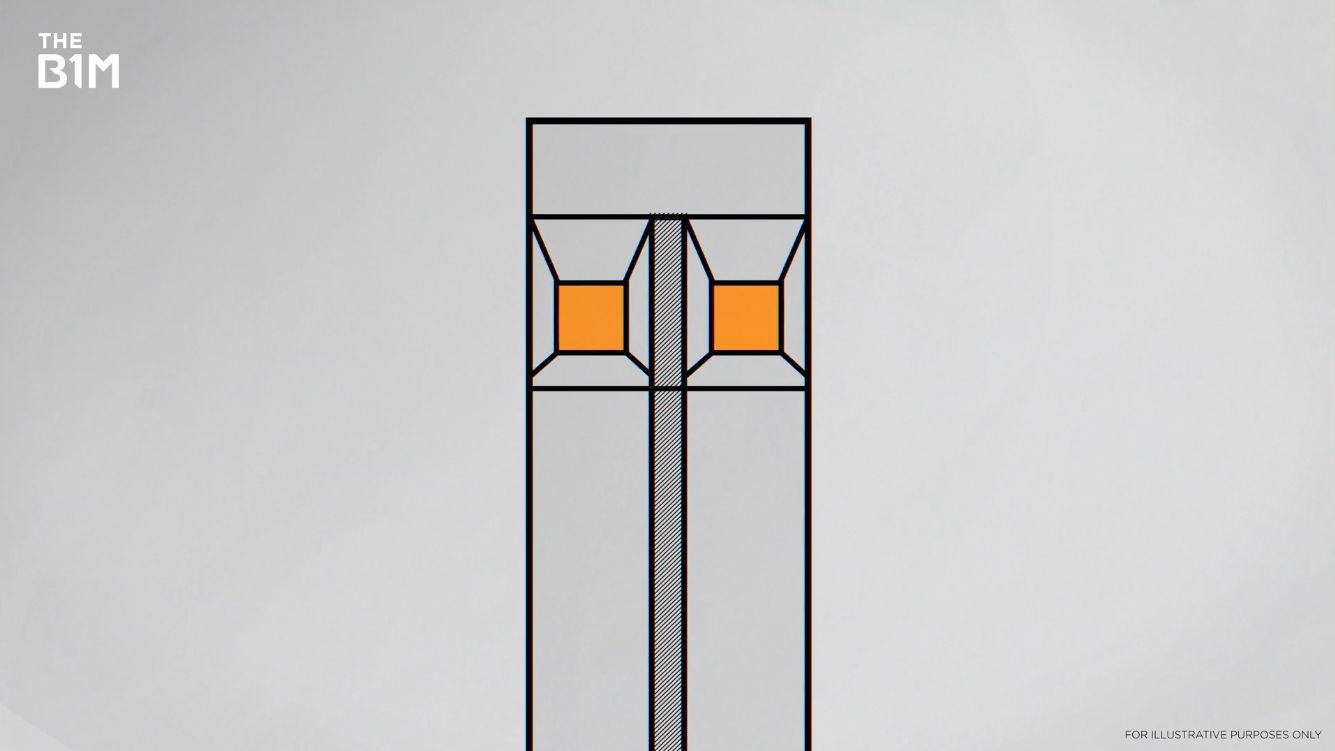
Above: To control the sway of 432 Park Avenue, a single tuned mass damper, stretching eight storeys, would have been needed. Instead, it was split into two on opposite sides of the tower.
The Grand Opening of 432
The building launched in late 2015 following a bold marketing plan to introduce it to the world, as the journalist and author of the book, Billionaires' Row, Katherine Clarke explains:
“Instead of filming some boring video that shows off the bath tubs and the crystal chandeliers and the swimming pool and the amenities, he (Harry Macklowe) did something really unique which was to spend a million dollars to hire an Emmy nominated crew to film a marketing video for 432. It included the highwire artist, Philippe Petit who’s known for walking between the World Trade Center towers in the ‘70s, walking from the Empire State Building to 432 Park. It was very abstract, it was very artful, it had almost nothing to do with the units in the building but it caused a lot of ripples in the New York market.”
By 2014, 50% of the building’s units had already been sold for a collective $1 billion. That figure jumped to 90% in 2015.
It was official. With 432’s apartments proving popular, the cheapest of which still costing more than a million dollars, the mega-rich had signed up in droves to grab one of these exclusive homes. 432 was hailed as the pinnacle of luxury living.
But that perception was about to change. The building’s board, acting on behalf of residents and commercial unit owners, filed a lawsuit against the developers, Harry Macklowe and CIM Group and they didn’t hold back.
“Construction defect lawsuits are a dime a dozen in New York and you see them happen particularly in prominent towers but of the Billionaires' Row generation of supertall towers, this has had the worst of it. This is the most dramatic, painful litigation that has happened at a project and buyers at this building seem to be particularly unhappy”, said Hiten Samtani, journalist and founder of ten31 Media.
The complaint letter claimed that 432 'presents one of the worst examples of sponsor malfeasance in the development of a luxury condominium in the history of New York City.' It cited 1,500 identified construction and design defects and slated the developers' response to the reported issues. In closing, they demanded $125m in compensation.
On top of accusations developers shirked responsibility and looked to push the financial burden on residents, the Board claimed unit owners were facing horrible and obtrusive noise and vibrations, faulty elevators repeatedly shutting down, severe flooding, widespread water damage and claims that use of the trash chute sounded like a bomb going off.
New buildings, especially at this height, are almost expected to experience a few issues but Hiten Samtani says some of New York's developers come with something of a reputation.
“Developers who build condominiums are kind of incentivised to cut corners a little bit because once you sell the unit, it’s off your books. As long as you’re able to get the product, the inventory off your shelves fast enough, you don’t have to worry, it’s the next guy's problem and that is what we’re seeing here."
So, has 432 Park Avenue fallen over? No. Does that mean it’s a great place to live? Not necessarily. A tower of this height can run into a number of problems, like the wind. Any skyscraper will go through testing but that doesn’t guarantee positive results in practice and swaying can leave a skyscraper with more than motion-sick residents - it can really hamper the lift shafts.
A tall, slender tower can fall victim to a stack effect, where air friction deep in the lift shafts causes a load of noise. Not only that but rocking with the building’s sway can lead to uneven force distribution on lift cables and that means damage, malfunctions and in unfortunate cases, traps people inside.
It's worth noting, a bit earlier in the timeline, the cavalier Rafael Viñoly spoke, possibly a bit too candidly, at a public event about the project. While stating he thought it was a good building, he also shared some choice words, which he later apologised for, as Katherine Clarke explains:
“He said that the building had lots of ‘screw-ups’ and there were lots of elements that if he’d had the choice, he’d have ripped out but it just goes to show you the tug of war that Viñoly and Macklowe had during the course of the project. Macklowe’s one of those developers that sort of thinks he’s the architect as well and so there was a real push and pull between the two of them over all the design choices.”
Of course, the developers shot back at the lawsuit with a series of denials. They called it ‘ill-advised’, describing 432 as a ‘treasure’.
In their response they said the tower contained a ‘sophisticated symphony of systems (that) needed to be fine-tuned when residents began to move into the building’. They claimed to be carrying out work to improve 432 and looked to do more but were denied access to the building by the Board.
That’s all while, according to the developers, the Board was ‘manufacturing an ever-increasing list of demands’ and actually, reports suggest the lawsuit may not have been backed wholesale:
“We do know that not every resident of the building was onboard. Harry Macklowe described filing this lawsuit as a scorpion biting its own back because the residents of this building or the condo Board was undermining the values of their units so significantly that it was sort of unbelievable that they were doing so", said Katherine Clarke.
There’s been a an abundance of ‘he said, she said’ which has produced more than four million court documents so far and four years later, this lawsuit still rumbles on, continuing its slow, winding journey through the courts.
In fact, it's take so long that a whole new lawsuit has been launched this year. Once again, it’s coming from the Board of 432 on behalf of residents, this time alleging ‘a deliberate and far-reaching fraud’ by the developers. It’s looking to land more than $160m in compensation.
The 46 page court filing claims the building’s facade is plagued with thousands of severe cracks and deterioration, leading to flooding and corrosion. The complaint suggests the developers knew 432’s facade was defective and would never hold up, unless expensive remediation measures were taken.
The Board of 432 claim that rather than take action, developers fired every consultant that warned of the problems and hid the defects from apartment owners with the aim of securing massive profits and leaving the Board ‘holding the bag’.
It’s just the latest twist in this ever evolving story and at the time of publishing this article, the defendants have denied the claims and moved to dismiss the complaint.
And so you might be wondering if all of this has impacted sales? Well, while it’s reported 432 did see a dip in sale prices since the original lawsuits began, people are still buying apartments at 432 and once the legal issues are ironed out, any furore about this building will likely settle a bit too.
Is 432 Park Avenue a success?
Whether you categorise this building as a success depends on your point of view but as Katherine Clarke explains, there's one metric you can't question:
"432 Park is without a shadow of a doubt a huge financial success for the developers. That project sold reasonably quickly, it launched in 2013, I believe and it did gangbusters straight out of the gate. The building was extremely successful and bagged a lot of major buyers."
We know the apartments at 432 were popular - the projected sellout of the whole building was $3.1 billion. That’s a huge return and according to Macklowe, CIM made a cool $900 million in profit.
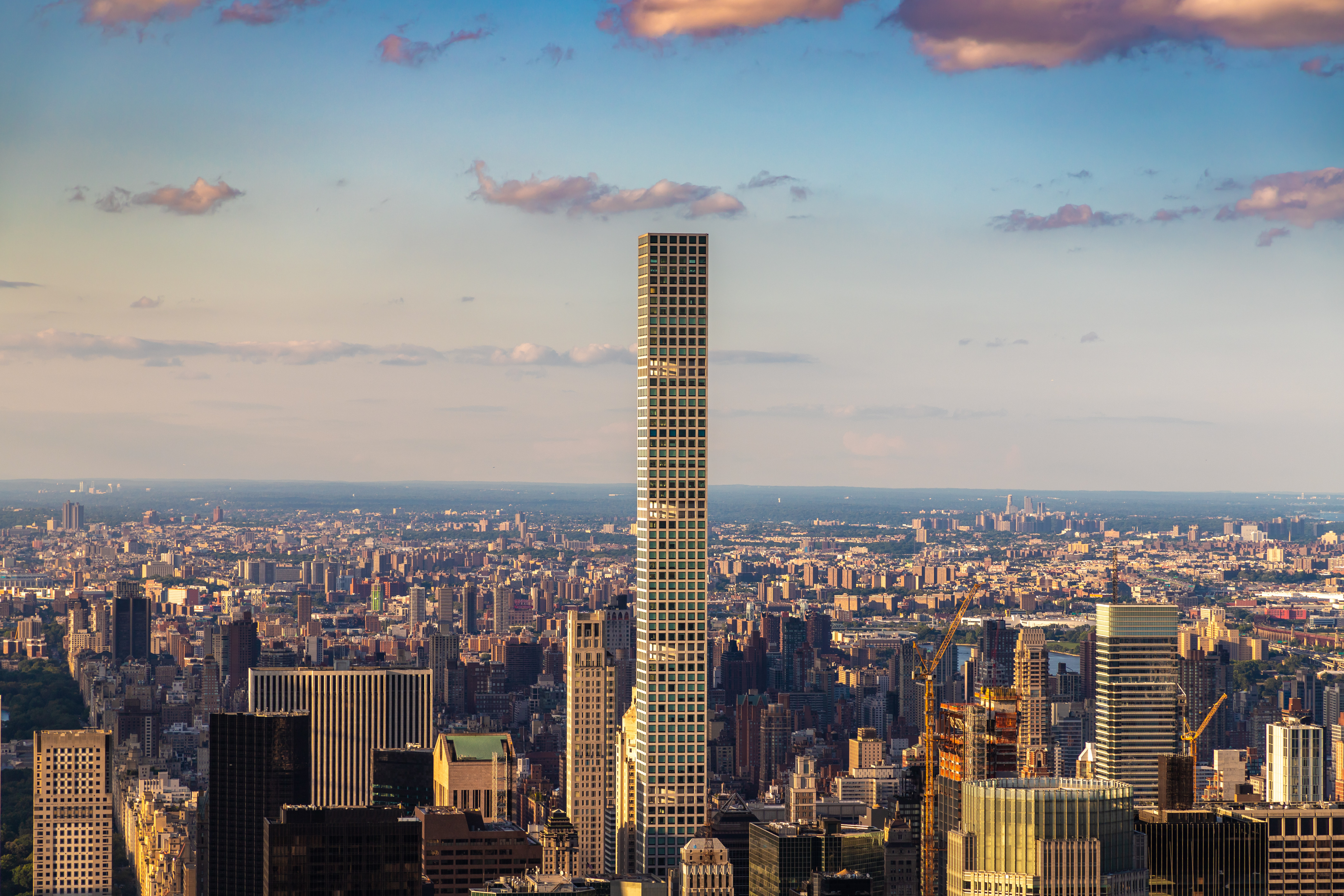
Above: Despite the lawsuits, 432 Park Avenue has been a huge financial success for the developers.
The financial returns are clear to see and love it or loathe it, this is one of the most famous condominiums anywhere on the planet. It’s faced a variety of scathing claims regarding structural problems and its court battle is far from over.
But when you zoom out a bit, it’s not the first skyscraper in this city to face a lawsuit - and it almost definitely won’t be the last. The fact is, this skyscraper isn’t going anywhere. It’s part of a New York time capsule of supertall, pencil thin towers in Billionaires' Row.
Like the art-deco designs of the 1920s, or the glitz of the 1980s, these towers are a reflection of their time but what about their legacy? Time will tell but their era is coming to an end.
Space in Billionaires' Row is quickly running out. Initiatives like the City of Yes are giving power back to working class New Yorkers, mandating 20% of dwelling units in high density areas. In a city like New York where one in four people can’t afford the essentials and housing costs a fortune, that’s great news for the average person.
But Manhattan will always be synonymous with luxury and 432’s stamp on the city is secured. It’s faced more headlines than most of its peers and time has yet to tell when it will be free of turmoil.
What we do know is that it unapologetically stands out in one of the world’s most iconic skylines. It’s bold and controversial and doesn’t that make it a true New Yorker?
Additional footage and images courtesy of the Dronalist, Vanity Fair, Someformofhuman and Dolev / CC BY-SA 3.0, Terri Boake, CTBUH, Sony Pictures, deanwiles, NBCUniversal, louisatalksbuilding, daveracks, Blank Creative, Brown Harris Stevens, CNN, Serhant, Fox Searchlight Pictures, Disney, Tamron Hall Show, Marlon Schwarcz, DBOX and Paramount Pictures.
We welcome you sharing our content to inspire others, but please be nice and play by our rules.
